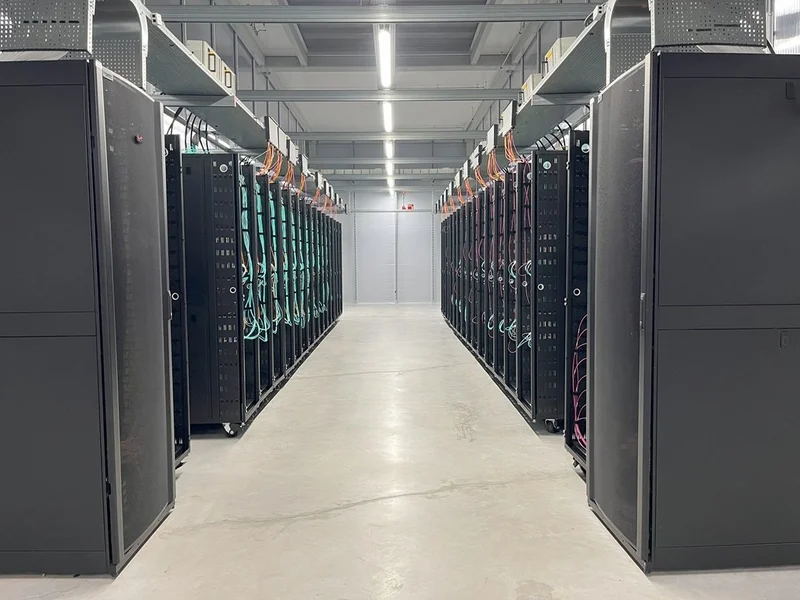 summary:
Is Nebius Group Stock Really the Next Nvidia? A Data DiveNebius Group (NBIS) is generatin...
summary:
Is Nebius Group Stock Really the Next Nvidia? A Data DiveNebius Group (NBIS) is generatin... Is Nebius Group Stock Really the Next Nvidia? A Data Dive
Nebius Group (NBIS) is generating buzz as a potential AI infrastructure play, prompting the inevitable "next Nvidia" comparisons. But does the data support the hype? Let's dissect the numbers.
The Neocloud Proposition: Rent-a-GPU
The core of Nebius's appeal lies in its neocloud services. They offer access to GPU clusters via cloud infrastructure. The pitch is simple: avoid the massive capital expenditure of building your own data centers and buying up scarce Nvidia GPUs. Instead, rent capacity from Nebius. CoreWeave and even Oracle are in the same space. But are they really poised to challenge Nvidia's dominance?
The market seems to think so, at least in the short term. Nebius stock (NBIS) has seen some recovery after a post-earnings dip, mirroring similar movements in CoreWeave (CRWV) and IREN (IREN). Goldman Sachs is bullish, with analyst Alexander Duval reaffirming a "Buy" rating and a $155 price target – a 71% upside from current levels. The rationale? Robust client demand and new contracts with hyperscalers.
Contracts vs. Profitability: A Reality Check
Those hyperscaler contracts are certainly eye-catching. Microsoft signed a five-year, $17.4 billion infrastructure services deal with Nebius. Meta followed with a five-year, $3 billion contract. Nebius management is now guiding for $7 billion to $9 billion in annualized run-rate revenue (ARR) by the end of 2026.
Here's where the data demands a closer look. While that ARR target sounds impressive, Nebius reported a net loss of $508 million for the first nine months of 2025. They have $2.4 billion in cash, but that runway shrinks fast at that burn rate. To stay afloat, Nebius has resorted to an at-the-market offering to fund its expansion.
I've looked at hundreds of these filings, and this particular strategy raises a flag. It's not necessarily a death knell, but it signals that profitability is not keeping pace with revenue growth. Is Nebius spending too much to acquire those big contracts? Are they underpricing their services to gain market share?
A key question arises: How sustainable is this growth model? Can Nebius convert these massive contracts into actual profit, or are they simply buying revenue?
Valuation: The Price of Future Potential
If Nebius hits its 2026 ARR forecast, the stock trades at an implied forward ARR multiple of about 2.6. But ARR is a non-GAAP metric. A more conservative approach is to look at consensus financial models from Wall Street analysts. Given Nebius's market cap of around $21 billion, the implied forward price-to-sales (P/S) ratio is about 5.5, based on 2027 GAAP revenue.
That seems reasonable, if they can deliver. Bernstein analyst Gautam Chhugani is upbeat on IREN, noting their focus on building their own full infrastructure. This is in contrast to Coreweave, which (according to Chhugani) relies on co-location deals. This difference in strategy could impact long-term profitability and scalability.
Wall Street's approach to CoreWeave is split. Compass Point analyst Michael Donovan cites long-term contracts as a buy signal, while J.P. Morgan's Mark Murphy points to project delays that shifted revenue into later quarters. These conflicting views highlight the uncertainty surrounding these neocloud players.
The TipRanks Stock Comparison tool suggests that CoreWeave offers the biggest upside, followed by Nebius and then IREN. But only Nebius has a "Strong Buy" consensus rating from Wall Street. This discrepancy (biggest upside vs. strongest buy rating) suggests that analysts are weighing potential growth against risk. As reported by Tipranks, CoreWeave (CRWV), Nebius, IREN Are Rising from the Q3 Fall — Time to Buy?
The "Next Nvidia"? Not Quite Yet
Nebius has secured impressive contracts and is riding the AI wave. But the path to becoming the "next Nvidia" is paved with profitability, not just revenue. The company's current losses and reliance on at-the-market offerings raise concerns. While the long-term potential is there, the company needs to demonstrate it can translate growth into sustainable profits.

